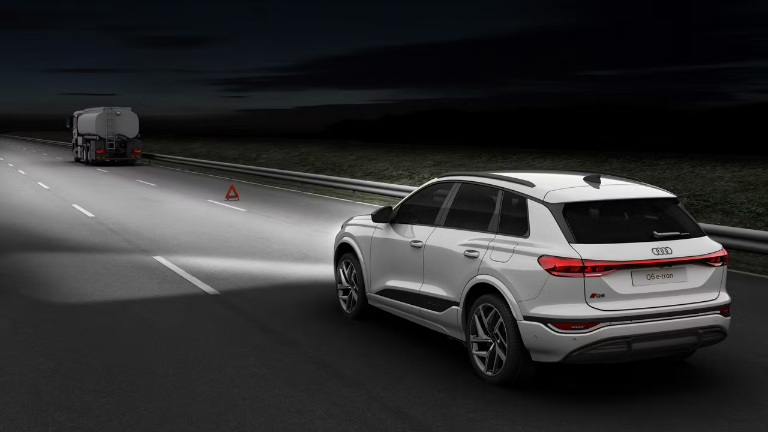Audi and active safety: when technology anticipates hazards
In the context of intelligent mobility, Audi develops active safety solutions based on advanced electronic architectures, multimodal sensor technology and predictive algorithms. The goal? To reduce the risk of collisions through the proactive intervention of on-board systems.
Advanced ADAS
Audi active safety systems are divided into three functional macro-areas.
Predictive detection and intervention - Systems such as Predictive Emergency Braking and Automatic Emergency Steering integrate data from radar, lidar, cameras and ultrasonic sensors to assess the risk of collision in real time. If the driver fails to react, the vehicle can brake or steer itself.
Proactive occupant protection (Pre Sense) - In the event of a potential imminent collision, the system activates preventive measures: belt tensioning, automatic window closing, seat adjustment and activation of hazard lights.
Car2X Communication - Audi vehicles are able to communicate with road infrastructure and other vehicles to anticipate risky situations, such as sudden traffic jams, stalled vehicles or dangerous junctions.
Quick evaluations in unforeseen situations
The development of these technologies is complex in many respects. Among the challenges faced, the team mentions the assignment of tasks to the vehicle allowing the driver to intervene by deactivating the assistance system at any time, and the adjustment of the intensity of intervention of the automatic steering system: 'For us it is important that the driver and passengers feel safe and never feel that they are not in control. At the same time, the system's intervention must be an effective “call to action”, as it ultimately aims to avoid an accident," explains Christoph Liebelt, a member of Audi AG's Active Safety Function Development team.
But how does Automatic Emergency Steering work in detail? In an urban scenario, with the car travelling at a speed of less than 40 km/h, an unstable cyclist enters the vehicle's path. If the driver does not react, the system calculates an evasive trajectory compatible with the vehicle's dynamic limits and executes it in real time, optimising the steering.
'The system assesses the situation in milliseconds,' Liebelt specifies. The parameters considered are speed, steering angle, available space and the behaviour of other road users.
'The system assesses the situation in milliseconds,' Liebelt specifies. The parameters considered are speed, steering angle, available space and the behaviour of other road users.
Source: Audi AG
